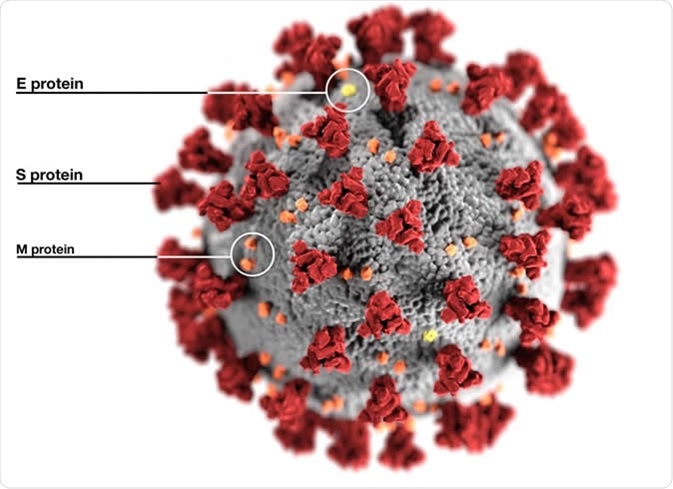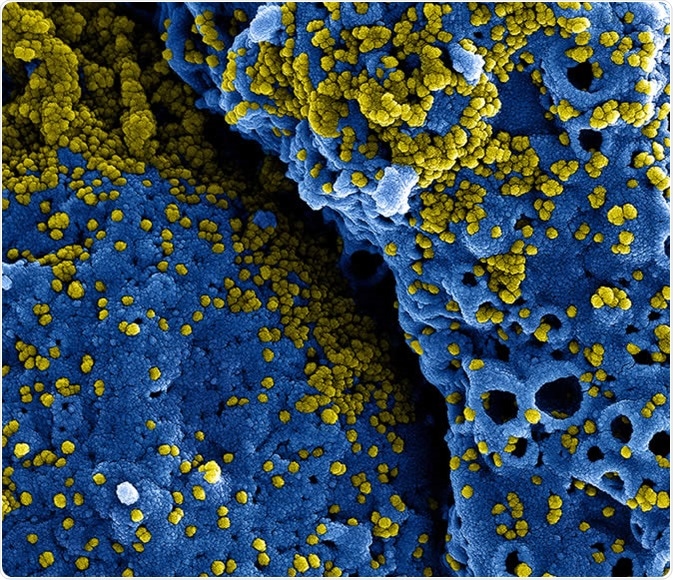Skip to:
The rapid spread of the virus that causes coronavirus disease (COVID-19) has sparked alarm worldwide. The World Health Organization (WHO) declared the condition a global pandemic, with many countries grappling with the rise of infections.
The disease is caused by severe acute respiratory syndrome coronavirus 2 (SARS-CoV-2), which originated in China in December 2019. From there, it has spread to over 192 countries and territories. The pathogen is a coronavirus, a type of virus that typically causes respiratory illness.
What are coronaviruses?
Coronaviruses are a large family of viruses that can infect both animals and humans, first identified in the mid-1960s. They are a respiratory virus named for the crown-like spikes on their surface. These viruses are culprits in several outbreaks across the globe. Usually, coronaviruses spread in animals but can jump to humans. From there, the pathogens can spread from person to person.
There are seven known types of human coronaviruses, wherein four types, namely KHU1, OC43, NL63, and 229E, cause mild to moderate respiratory infections, such as the common cold. Two types, however, cause severe respiratory infections – the severe acute respiratory syndrome coronavirus (SARS-CoV) and the Middle East Respiratory Syndrome coronavirus (MERS-CoV). The seventh coronavirus type is the novel coronavirus SARS-CoV-2 that has spread from China to the rest of the world.
The emergences of SARS-CoV-2, SARS-CoV, and MERS-CoV demonstrate the importance of the Coronaviridae as emerging human pathogens.
The Coronaviridae family comprises enveloped positive-sense single-stranded RNA viruses of the order Nidovirales with a viral genome is 26–32 kilobases in length. The particles are typically decorated with large (~20 nm), club- or petal-shaped surface projections (the "peplomers" or "spikes"), which in electron micrographs of spherical particles create an image reminiscent of the solar corona.
The family is divided into Coronavirinae and Torovirinae sub-families, which are further divided into six genera: Alphacoronavirus, Betacoronavirus, Gammacoronavirus, Deltacoronavirus, Torovirus, and Bafinivirus. While viruses in the genera Alphacoronaviruses and Betacoronaviruses infect mostly mammals, the Gammacoronavirus infect avian species, and members of the Deltacoronavirus genus have been found in both mammalian and avian hosts.
Why are coronaviruses dangerous?
Though a majority of coronaviruses cause mild disease, some types may lead to life-threatening conditions. A concern regarding coronaviruses is that they are zoonotic, which means they can spread from animals to humans and take on more virulent forms.
Though the animal source of the current pandemic is not yet clear, there had been two coronavirus outbreaks that came from the bat-to-human transmission in the past two decades. SARS in 2002 and the MERS in 2012 caused severe illness in patients. The origins of the MERS virus are not fully understood but, according to the analysis of different virus genomes, it is believed that it may have originated in bats and was transmitted to camels sometime in the distant past. Studies have shown that humans are infected through direct or indirect contact with infected dromedary camels.
Both SARS and MERS have higher fatality rates than COVID-19 but spread through human-to-human transmission more slowly.
The SARS-CoV-2, which has ravaged across the globe in the past three months, spread faster than influenza. An infected person with COVID-19 can spread the virus to 2 to 2.5 people, compared to 1.3 in influenza.
SARS-CoV-2 / COVID-19
The coronavirus disease first emerged in a seafood market in Wuhan City, Hubei Province, in China in December 2019. Since then, it has spread to many countries, prompting lockdowns as measures to prevent the spread of the virus.
.jpg)
Novel Coronavirus SARS-CoV-2: This scanning electron microscope image shows SARS-CoV-2 (round gold objects) emerging from the surface of cells cultured in the lab. SARS-CoV-2, also known as 2019-nCoV, is the virus that causes COVID-19. The virus shown was isolated from a patient in the U.S. Credit: NIAID-RML
The coronavirus disease mostly affects older adults but can also cause mild to moderate disease in younger people. Evidence has shown that the high-risk populations include those who are more than 60 years old, those with underlying health conditions, such as heart disease, lung disease, kidney disease, cancer, hypertension, and diabetes mellitus, those who are immunocompromised such as those undergoing chemotherapy, and those with HIV/AIDS, among others.
The most common symptoms of COVID-19 include fever, dry cough, and fatigue. In more severe cases, the virus can cause shortness of breath or difficulty breathing and may gradually progress to acute respiratory distress syndrome (ARDS), which can be fatal.
There are still no cure or vaccines available for COVID-19.

SARS-CoV-2. Image Credit: Centers for Disease Control and Prevention
SARS-CoV
The severe acute respiratory syndrome (SARS) emerged in 2002 in China's southern region. The disease has spread to more than two dozen countries in Asia, Europe, South America, and North America, infecting 8,098 people and killing 774.
SARS infection usually commenced with high fever, chills, and other symptoms, such as headache and body aches. In some people, mild respiratory symptoms emerge, while diarrhea is seen in 10 to 20 percent of patients. After two to seven days, the symptoms progress, and patients may develop a dry, nonproductive cough that might be tied to low oxygen levels. In about 10 to 20 percent of the cases, the patients may need intensive care and mechanical ventilation. In SARS, patients develop pneumonia, which can lead to severe and life-threatening complications.
MERS-CoV
The Middle East respiratory syndrome (MERS) is a viral respiratory illness caused by a coronavirus called MERS-CoV, which first emerged in Saudi Arabia in 2012. The symptoms of MERS include fever, cough, and shortness of breath. People who contract the virus may develop pneumonia, while others develop gastrointestinal symptoms, such as diarrhea. The fatality rate of MERS is about 35 percent, which is higher than the COVID-19.

MERS Coronavirus Particles Colorized scanning electron micrograph of MERS virus particles (yellow) both budding and attached to the surface of infected VERO E6 cells (blue). Image captured and color-enhanced at the NIAID Integrated Research Facility in Fort Detrick, Maryland. Credit: NIAID
References
Further Reading
Last Updated: Mar 24, 2021